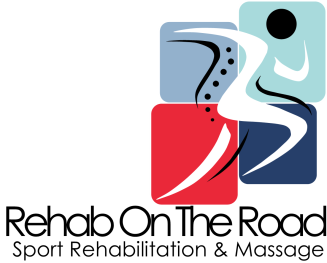
Shin splints or shin pain is clinically referred to as medial-tibial stress syndrome (MTSS). It is an umbrella term that often refers to a number of issues involving pain in the shin area.
At their worst, shin splints can turn into a stress fracture along the tibia, and searing pain will be felt with every stride.
In less severe cases,the muscles and tendons in the shin area may be tender and inflamed, or even develop micro tears near their attachment to the tibia (shin bone
Symptoms
- Pain along the front and medial side of the tibia.
- Mild cases – pain after running.
- Moderate cases – pain on impact as foot strikes the ground.
- Severe cases – pain standing or just walking without any impact

Causes
Shin pain can most often be traced back to a sudden spike in training volume and intensity.
As your tibia and surrounding muscles strengthen with repeated high-impact activity, the chance of shin splints lessens.
Hence why shin splints are more common in those just starting or returning to a running programme.
They are also a sign you could be wearing the wrong shoe or worn out shoes.
Running on hard surfaces also increases your risk of developing shin splints.
The Treatment
When the first twinges of pain strike, reduce your running to a comfortable level for a few days to a week, then slowly increase your mileage using the 5-10% rule
Rest, ice, and ibuprofen.
Taping or bracing provides compression to aid relief.
Mobilisation and massage can promote tissue healing and mobilise tight structures.
Pain free exercises for your ankle, calf and hip flexibility.
Followed by strengthening exercises for the entire leg

Prevention
The easiest and best way to avoid shin splints is to increase mileage gradually, and mix your training surfaces from concrete or asphalt to grass or trails. If you have high arches and a rigid foot then you may need shoes with added support and cushioning. Work towards having good mobility and stability, not just throughout your ankle and lower leg, but in your entire body. Strength with mobility means the entire kinetic chain can work together for maximum running efficiency, so take the time to do strengthening exercises daily. Remember a dynamic warm up before a run may prepare better your body for the impact of running.

LEG SWING SIDE BAND
Attach an exercise band to your ankle. Swing your leg to one side, and then the other, in a controlled way. This exercise mobilises a stiff hip joint, and strengthens the lateral gluteal muscles.

HEEL DROP
Stand with your toes on the edge of a step or a box, and knees bent slightly. Hold onto something stable for support if required. Drop your heels downwards. You should feel a stretch in the back of your legs, in the lower calf.

SINGLE LEG CALF RAISE
Starting on one foot,raise up onto your toes.Slowly, lower yourself back down in a controlled movement. This is a strengthening exercise for the calf muscles and lower leg. Repeat one sided, then switch to your other leg.

QLUTE BRIDGE
Lie flat on your back, with your knees bent, squeeze your bottom muscles and lift your body upwards.Make sure you maintain good posture (do not over-arch your lower back). This exercise helps to strengthen the abdominal, lower back, gluteal and hamstring muscles.

WALL SQUAT
Open your legs slightly wider than shoulder width, stand with your back resting against a wall, and bend your knees to 90 degrees. Make sure you keep the middle of your knee cap in line with the middle toes of your foot.This exercise will help to strengthen your quadricep muscles, knee joints and legs.

SINGLE LEG BOSU SQUAT
Stand on a BOSU, and go into a squat position while standing on one leg. Make sure when you squat you keep the middle of your knee cap in line do not let your knee drift off to one side. Using a BOSU helps improve your balance and strengthens the smaller muscles of the leg.
This programme has specific exercises for shin splints. You want to strengthen the calf muscles while maintaining good mobility. It is essential to strengthen your entire lower limb from your pelvis, hips, core and quads. It is important to ensure the exercises are performed with good technique and good postural control. Make sure to repeat the same number of exercises on both legs. Make sure you are always pain-free and take care not to progress too quickly.
Contact Me
Let's chat!
Need more information? Send me an email or drop me a line. I don’t bite!
- Charlotte@rehabontheroad.co.uk
- 07971448719
